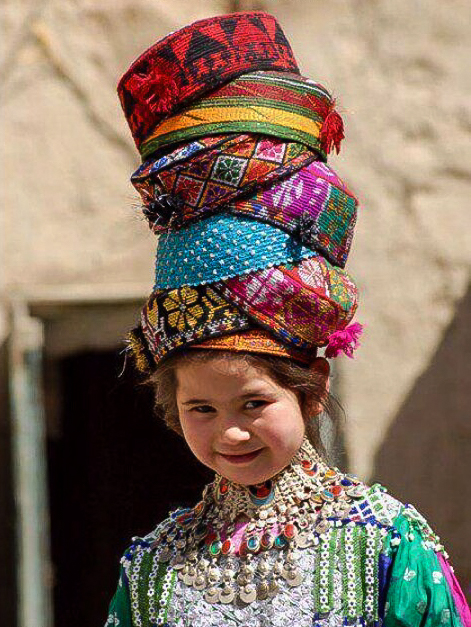Chadar, Chadari and Hijab came to us from Kabul and Iran. Our people did not know the idea of women covering their hair and face. We had our own way of doing things, dressing up, and beliefs.
In my days and the days before me, the girls and boys wore caps – colourful caps, with topug at the front, and colourful threaded braids hanging from the sides. The family sewed up one for every child every few years, and the girls wore theirs until they were married, and thereafter they wore the cap and covered it with colourful scarf and jewellery.

Photo by Basir Seerat or Najibullah Musafer
Women worked on the farm, looked after the family, looked after cattle, did the work, while the men sipped tea and lazied in the shade in summers and in the sun in winters. Women sewed those caps and clothes and the topug and the braids and the designs. The men wore caps of different colours and had bright colourful topug. Your uncle wore one as a kid, and another when he grew up a little. We made one for your father. It was an essential part of the clothing. Men wore the cap, boys wore the cap, girls wore the cap, and women wore the cap and a once married, put a fabric on the top.
When the first men returned from Kabul, and Iran and Najaf, they brought back other ideas. They brought back chadar and chadari and black veils and white caps, and in my lifetime the colours, and the colourful dresses and colourful caps slowly faded away.
*topug = popping on the side of caps made from threads
*chadar = long scarf
*chadari = full veil usually worn in Afghanistan and Pakistan
I’ve always wondered why some grandmothers wore caps under their scarves. Do you know around what time we inherited the chadar or just hijab in general?
LikeLike